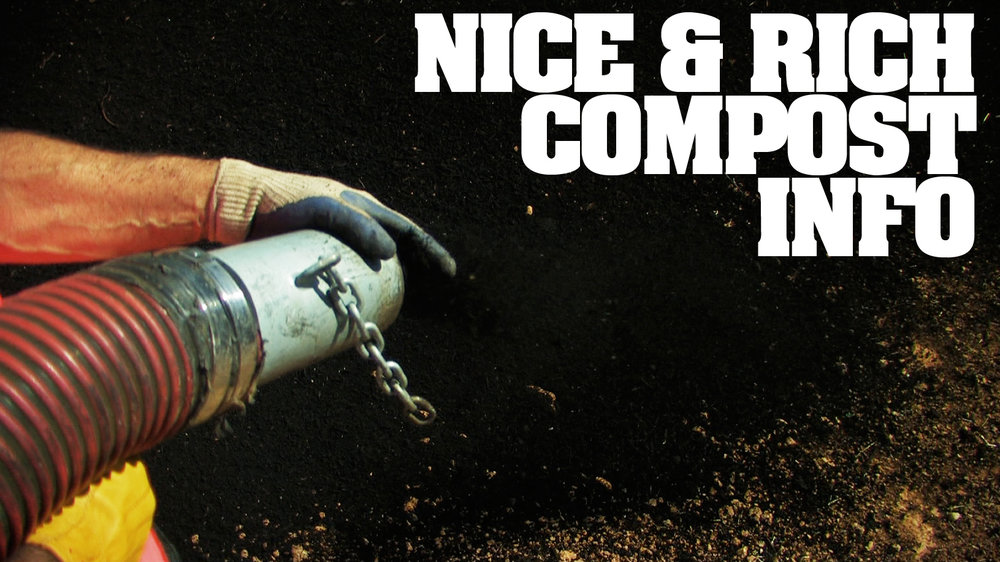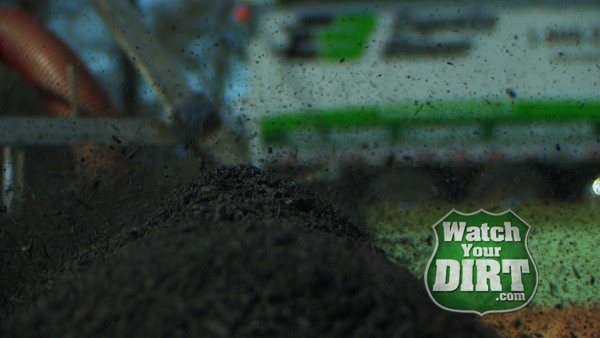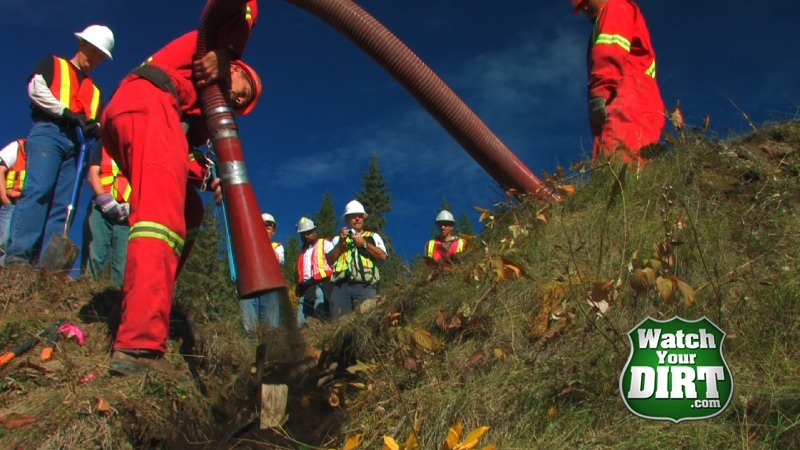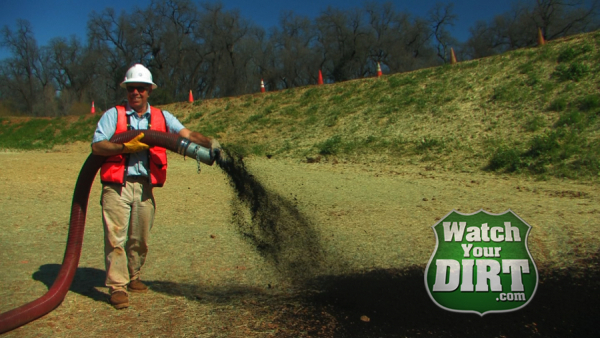16 Nov Compost Blankets – Video & Info
 Hey Everybody!
Hey Everybody!
Let’s talk some COMPOST, shall we!
Compost is such an effective, versatile tool in the world of erosion and sediment control. Sadly though, it seems that it is often misunderstood, misued or too quickly dismissed. A lot of that might be due to a lack of good information out there. So, here at WatchYourDirt and Dirt Time, we thought we’d do our part and try to add some quality information to the mix.
 So, we took some really good Compost-centric excerpts from our video and Erosion Draw Software libraries to give you a sampling of what those educational tools have to offer. The video comes from the ‘Big Cover Up’ episode of our Dirt Time video series, while all the other information is taken from the Erosion Draw software tool.
So, we took some really good Compost-centric excerpts from our video and Erosion Draw Software libraries to give you a sampling of what those educational tools have to offer. The video comes from the ‘Big Cover Up’ episode of our Dirt Time video series, while all the other information is taken from the Erosion Draw software tool.
ErosionDraw is a great tool that covers tons of erosion and sediment control techniques, giving not only the full information (description, advantages, disadvantages, comparisions, installation, etc.) but, ErosionDraw also gives access to the full CAD drawings as well.
If the information below looks good to you. You may want to give our videos and software a quick look 🙂
COMPOST BLANKETS
Definition
A compost blanket is a layer of compost designed to prevent erosion, especially rills and gullies that may form under more traditional methods of erosion control. In many cases, a compost blanket can be more effective at vegetation establishment, weed suppression and erosion control than an Erosion Control Blanket (ECB) or Hydroseeding. Compost blankets can be applied by hand, conveyor system or compost spreader; however, the most cost-effective and efficient method is the use of a pneumatic delivery system, i.e. a compost blower truck.
 Purpose
Purpose
A compost blanket is used on slopes to prevent raindrop erosion and in some cases, to increase infiltration rates. A trademarked form of a compost blanket, the Rexius EcoBlanket™ increased infiltration rates and decreased sediment delivery by 99% as compared to bare soil, in a study conducted by the San Diego State Erosion Control Laboratory (Rexius). The success of compost blankets is dependent upon the blanket not being undermined by water; this can be accomplished by keying in the top of the blanket, or the use of a compost berm or sock at the top of the slope. When applied correctly, compost blankets provide nearly 100% surface coverage. (Faucette, 2002)
 Advantages
Advantages
- Compost blankets can be more effective than ECBs, because they come in better contact with the underlying soil, reducing the chance of rill formation. (Faucette, 2002).
- Compost is organic, biodegradable, renewable, and can be left onsite. This is particularly important near streams.
- Compost has been shown to suppress weeds. Over two growing seasons, the mass of weeds on compost blanket plots was 1/3 of the amount on the control plots (Glanville, 2003)
 Conditions Where Practice Applies
Conditions Where Practice Applies
Compost blankets are usually used on slopes of 2H:1V or gentler, but can be used on slopes as steep as 1H:1V, with consideration given to the length of slope and depth of application (AASHTO). Adding components such as a tackifier, or using compost blankets in conjunction with other techniques can increase the allowable steepness of the slope to be treated. Compost blankets should be extended 3-6 feet over the top shoulder of the slope to prevent water from getting underneath. Compost blankets should not be applied in areas of concentrated flow, and can be used in conjunction with compost berms or socks.
Blankets can be applied in a variety of thicknesses from ½” to 4”, depending upon the intended purpose. As a general rule, the more precipitation an area receives, the thicker the application.

Compost Specifications
There are many types of compost, all with different properties, so it is best to determine what application the compost is being used for. Compost can be derived from feedstocks, biosolids, leaf and yard trimmings, manure, wood, or mixed solid waste, and must be treated with heat to remove pathogens and destroy noxious weeds.
One of the most important criteria for quality compost is the temperature it was “cooked” at and the duration of composting. For instance, California Compost Regulations require that “windrowed compost” be kept at 131°F for 15 days and turned 5 times. Compost manufactured in bags is referred to as “in vessel” which the regulations require be kept at 131°F for only 5 days. Quality compost will then be cured for 60 days (D.Carvalo, personal communication, 2004).
Click Here for California Department of Transportation Specifications for Compost Blankets
 Installation
Installation
Compost blankets can be applied in a variety of ways, however the most efficient and cost-effective way is through the use of a pneumatic blower truck.
- Prepare the slopes by removing loose rocks, roots, clods, stumps and debris over 2” in diameter.
- Trackwalk slopes if feasible before application.
- For very steep slopes, compost berms can be installed at intervals over the compost blanket in much a similar manner as Straw Rolls.
GET MUCH MORE INFORMATION:
For MUCH MUCH more information on Compost Blankets and Berms including CAD design drawings, pick up a of Erosion Draw software!!
For more video, you can purchase our ‘Big Cover Up’ DVD or go all out and get the Dirt Time Ultimate Set – which contains our Big Cover Up episode, as well as Compost applications in 3 other episodes.
Tons of information is right at your finger tips – all available through the WatchYouDirt and the WatchYourDirtStore.
Any questions or comments, give us a ring in the comments below!












